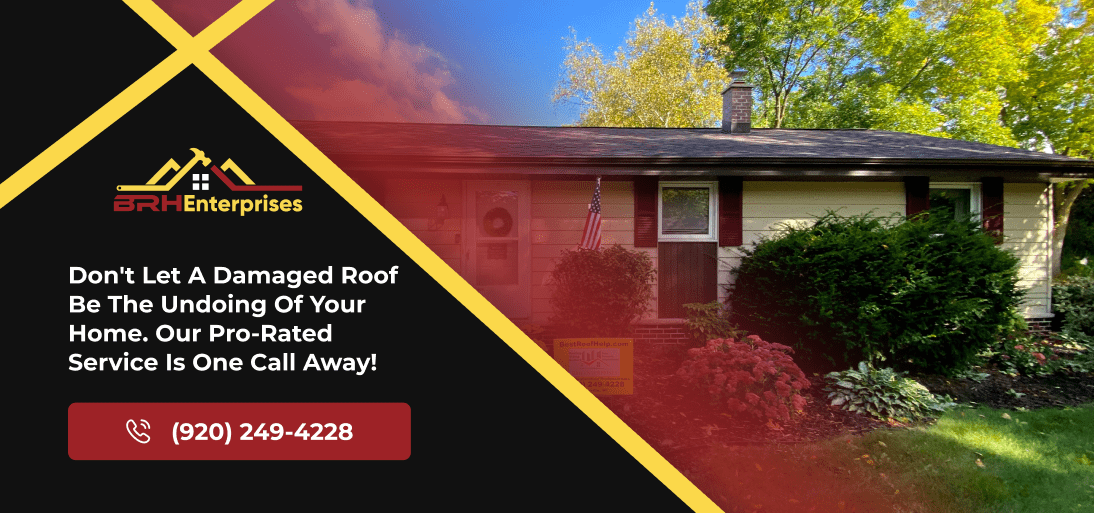DIY Window Weatherstripping Installation Guide: Seal Drafts & Save Energy
Estimated Reading Time : 6 Min.

Wisconsin homeowners face unique challenges when it comes to managing energy costs throughout the year. As temperatures move between cold winters and summer heat, windows often become the weakest link in home insulation. Properly installed window weatherstripping creates a barrier against these elements, preventing expensive drafts and significantly reducing energy bills. Effective weatherstripping can seal gaps where conditioned air escapes and outdoor air slips in, making it one of the most cost-effective energy improvements for any Wisconsin home.
Window weatherstripping comes in various materials, each designed to address specific sealing needs. For Wisconsin’s harsh climate, durable options like silicone, vinyl, and metal-backed weatherstripping typically perform best through freezing winters and humid summers. Self-adhesive foam tape offers simple installation for quick fixes, while spring-bronze weather stripping options provide longer-lasting protection against the elements. V-Seal weatherstripping works well for double-hung windows common in many Southern Wisconsin homes.
The right weatherstripping solution depends on your specific window type, local climate conditions, and budget. With proper installation, even older windows can perform nearly as efficiently as newer models, extending their useful life while maintaining comfort throughout Wisconsin’s seasonal changes.
Assessing Your Windows: Identifying Draft Problems
Before installing weatherstripping, you need to identify exactly where drafts are occurring around your windows. The first step in creating an energy-efficient home is an assessment of your current air leak points. Several simple tests can help pinpoint problem areas without specialized equipment.
The candle test remains one of the most reliable methods for detecting window drafts. On a windy day, light a candle and slowly move it around window frames and sashes. Where the flame flickers or smoke wavers, you’ve found air infiltration. Alternatively, you can dampen your hand and pass it around the window edges. If you notice any cool spots, this could indicate air leaks. For more precision, consider using an infrared thermometer to identify temperature variations around window frames (if available).
Once you’ve identified leak points, accurately measuring your windows becomes an important next step. Use a metal tape measure to record the exact dimensions of each window track, sash, and frame where weatherstripping will be applied. Measure twice to ensure accuracy, noting the width, height, and depth of channels where materials will be installed. Create a simple diagram for each window, marking specific areas requiring different types of weatherstripping materials.
Many Southern Wisconsin homes feature older windows that may show significant gaps after years of seasonal expansion and contraction. Proper assessment now means weatherstripping materials will fit correctly, creating an effective seal against our region’s harsh winters and summer humidity while maximizing energy efficiency.
Choosing the Right Weatherstripping Materials
Selecting appropriate weatherstripping materials for your Southern Wisconsin home significantly impacts energy efficiency and comfort. Each option offers unique benefits depending on your window style and your home’s specific needs. Knowing what these differences are can help ensure the best performance through our region’s challenging seasonal changes.
V-Seal weatherstripping (also called tension seal) works exceptionally well for double-hung and sliding windows. Made of durable vinyl, metal, or plastic, V-Seal weatherstripping creates a tight seal when compressed, yet allows windows to open smoothly. Foam tape provides an affordable solution for irregular gaps and works best on casement windows where compression occurs. While easy to install, foam typically needs replacement every 1 to 3 years in Wisconsin’s climate.
Door sweeps, though primarily for doors, can be modified for basement windows or other specialty applications. Silicone seals offer superior durability against extreme temperatures and moisture, making them ideal for Wisconsin homes where windows face heavy exposure to elements. For historic windows, consider spring-bronze weatherstripping that complements original craftsmanship while providing modern protection.
Modern windows benefit from low-profile weatherstripping that preserves clean sightlines while maintaining energy efficiency. Historic windows, while needing better performance, need to preserve the original wood frames. Many older Madison and Milwaukee area homes can achieve significant energy improvements with carefully selected weatherstripping that respects architectural integrity while enhancing comfort and efficiency.
Essential Tools and Preparation Steps
Successful window weatherstripping installation requires having the right tools on hand before you begin. For most weatherstripping projects, you’ll need a tape measure, utility knife, scissors, screwdriver (both flathead and Phillips), putty knife, caulking gun, and cleaning supplies. If you lack certain tools, alternatives exist. Kitchen shears can replace a utility knife, and a credit card can substitute for a putty knife when applying adhesive strips (though these alternatives are not fully recommended as the material can damage the items). For windows with existing hardware, a small pry bar or chisel may help remove old weatherstripping without damaging frames.
Proper surface preparation is important for adhesive weatherstripping to perform effectively through Wisconsin’s temperature extremes. Start by thoroughly cleaning all window surfaces with a solution of mild detergent and warm water. For stubborn residue from previous weatherstripping, use isopropyl alcohol or a specialized adhesive remover. Ensure frames are completely dry before proceeding, as moisture trapped under new weatherstripping will compromise adhesion and potentially damage wooden frames common in older Southern Wisconsin homes.
Check for loose paint, splinters, or damage that might prevent proper adhesion. Small repairs should be completed and allowed to fully cure before installing weatherstripping. For wooden windows, lightly sand surfaces where adhesive-backed products will be applied. This creates a slightly rough texture that improves bonding. Always test weatherstripping adhesive on an inconspicuous area first, particularly with historic windows, as some adhesives can damage older finishes or leave residue that’s difficult to remove.
Step-by-Step Installation Techniques
Properly installing weatherstripping can transform your windows’ performance during Wisconsin’s challenging weather. Following these techniques can ensure that weatherstripping creates an effective barrier against drafts while allowing windows to operate smoothly. With careful installation, even older windows can rival the efficiency of newer models throughout our extreme seasonal changes.
For V-Seal weatherstripping:
- Begin by measuring and cutting strips to fit precisely along window sashes
- Install along the sides of the sash where it meets the jamb, positioning the point of the V facing inwards
- For double-hung windows, place the strips along the bottom of the upper sash and the top of the lower sash
- Press firmly to ensure adhesion, but avoid stretching the material
- When installing compression weatherstripping, position it where the sash meets the stop molding, creating a tight seal when the window closes
Corner seals often present challenges during installation. For proper sealing:
- Cut V strips at 45-degree angles to create clean corner joints
- When weatherstripping double-hung windows, ensure materials don’t interfere with pulley systems or balances.
- If your home has older windows with rope-and-pulley mechanisms common in Southern Wisconsin’s historic homes, install weatherstripping to allow smooth operation while still sealing effectively
Look for common issues by testing the window operation after installation. If windows become difficult to open, the weatherstripping may be too thick or improperly positioned and needs to be adjusted to balance energy efficiency with functionality. Remember that properly installed weatherstripping should create a seal without needing excessive force to operate windows.
Seasonal Maintenance and Weatherstripping Care
Wisconsin’s dramatic seasonal shifts from frigid winters to humid summers can significantly impact your window weatherstripping’s performance and lifespan. Regular maintenance keeps these critical energy barriers functioning optimally year-round. We recommend inspecting all window weatherstripping twice a year, once before winter and again in spring, to catch potential issues before they lead to energy loss.
During inspections, look for common signs of weatherstripping deterioration, including brittleness, cracking, compression, or areas where the material has pulled away from the window frame. Winter conditions can make vinyl and rubber weatherstripping stiff and less effective, while summer humidity can cause some adhesives to fail. Clean all weatherstripping with mild soap and water, avoiding harsh chemicals that break down materials. For V strip and tension seals, gently wipe dust and debris from channels to maintain proper function.
When replacement becomes necessary, don’t wait until complete failure occurs. Weatherstripping showing more than 25% deterioration should be replaced promptly. For adhesive-backed products, completely remove old material and adhesive residue before installing new weatherstripping. Spring is ideal for replacements, as moderate temperatures are best for adhesive curing. Many Southern Wisconsin homeowners find that silicone or EPDM rubber weatherstripping offers the best long-term performance through our temperature extremes, though proper installation matters more than material choice. Well-maintained weatherstripping not only prevents drafts but also keeps dust, insects, and moisture from infiltrating your home.
Advanced Weatherproofing: Beyond Basic Weatherstripping
While weatherstripping provides excellent protection against drafts, combining it with complementary insulation methods creates a comprehensive defense system for your windows. Window films offer an additional layer of insulation that works alongside weatherstripping to reduce heat transfer. These transparent films reflect heat back into your home during winter while blocking solar heat gain in summer, addressing issues that weatherstripping alone cannot. For maximum efficiency, consider combining weatherstripping with cellular shades, which create air pockets that provide additional insulation against Wisconsin’s harsh winter temperatures.
Storm windows represent another powerful upgrade that works alongside weatherstripping. When properly installed, exterior or interior storm windows create a dead air space that enhances insulation while reducing condensation. For historic properties throughout the Madison and Milwaukee areas, custom storm windows preserve architectural character while dramatically improving energy performance when paired with appropriate weatherstripping.
Some weatherproofing situations require professional expertise, particularly for homes with unique architectural features or severely damaged windows. Several specialized contractors throughout Southern Wisconsin offer comprehensive weatherstripping services using industrial-grade materials not typically available to homeowners. Professional installation may be worth considering for difficult-to-reach windows, historic properties with specialized requirements, or when addressing complex issues like structural settling that has created uneven gaps. These services often include detailed energy assessments that identify additional opportunities for improving window performance beyond basic weatherstripping.
Professional Window Replacement with BRH Enterprises LLC
If you’re struggling with drafty windows and high energy bills in Southern Wisconsin, don’t worry! BRH Enterprises LLC can help. If your weatherstripping is beyond repair, it may be time for complete window replacements. Give our experts a call at (920) 249-4228 and schedule a consultation to determine the best fit for your home.


